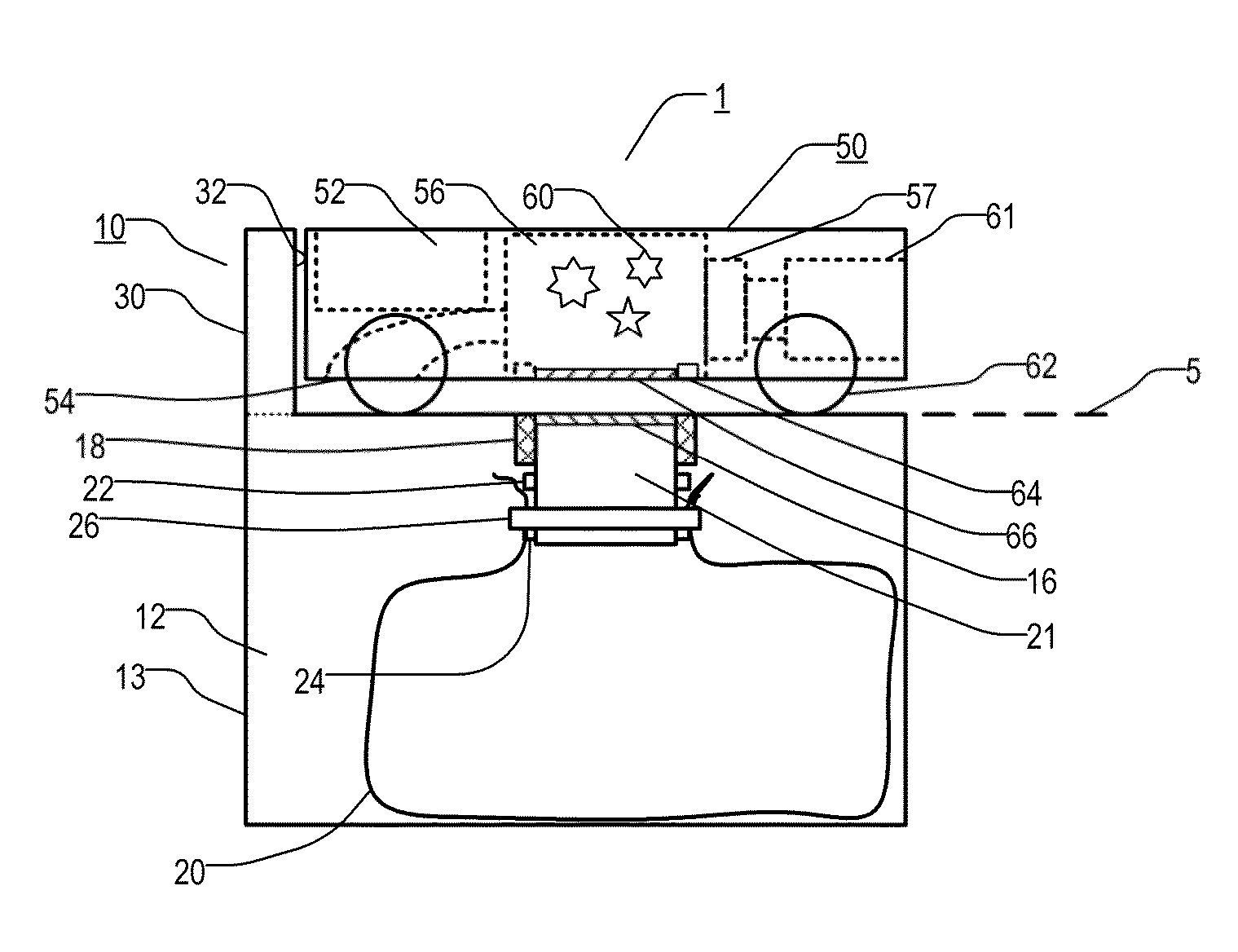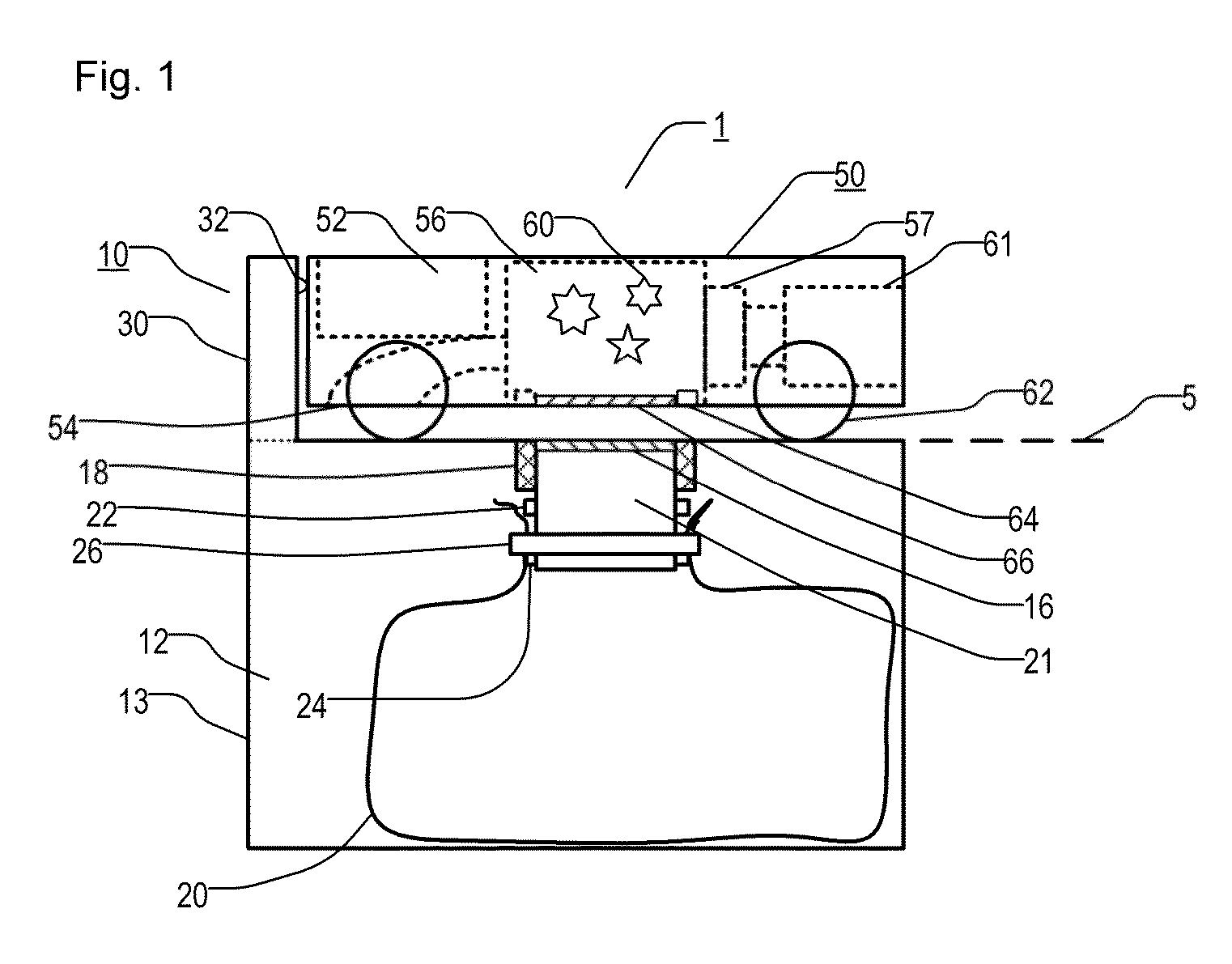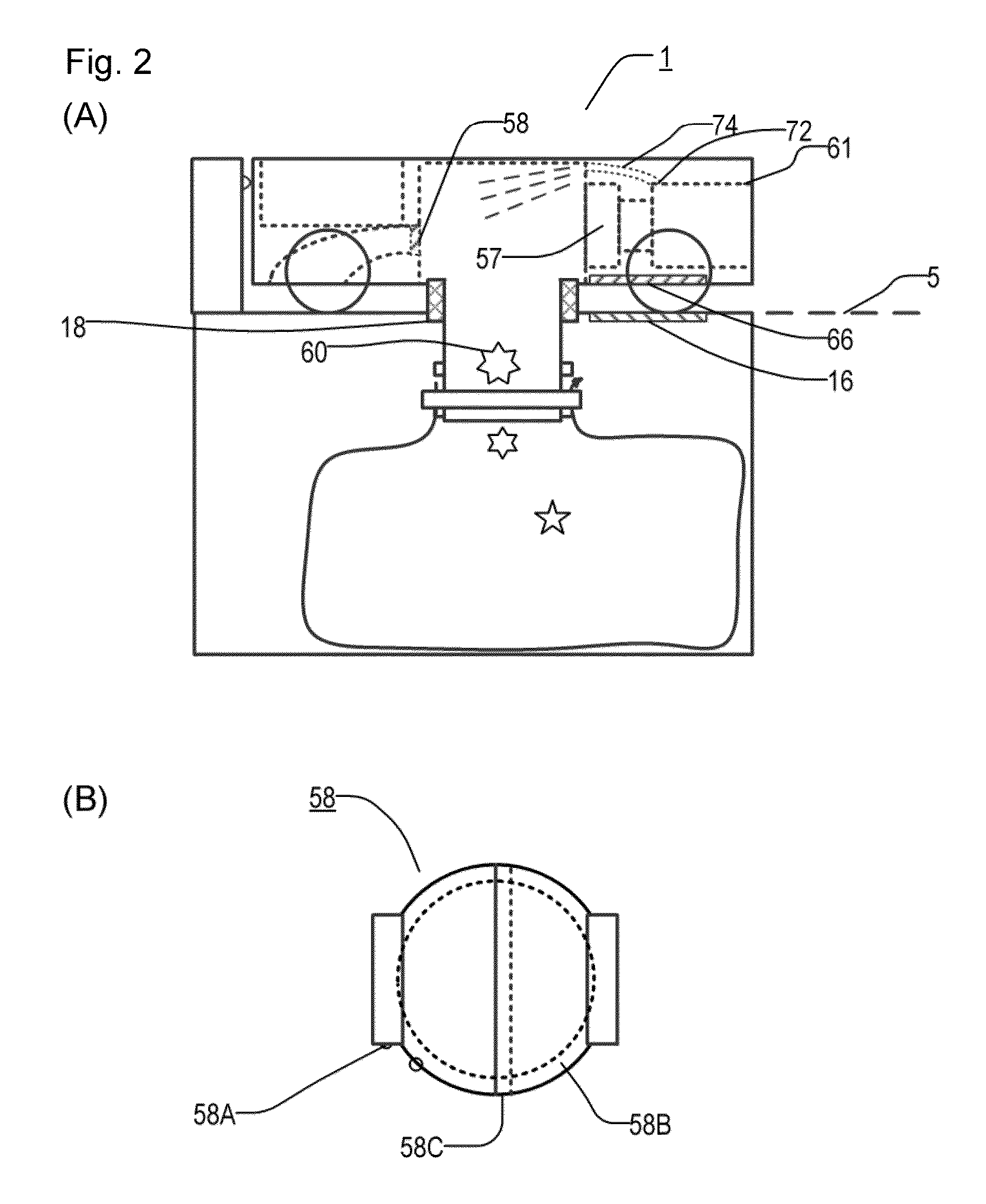Robot cleaner and dust discharge station
a robot cleaner and dust discharge technology, applied in the field of robot vacuum cleaners, can solve the problems of difficult to discharge dust completely in a multi-stage cyclone cleaner, conventional systems need relatively complex devices inside, etc., and achieve the effect of eliminating the need for frequent dust waste and excellent dust discharg
- Summary
- Abstract
- Description
- Claims
- Application Information
AI Technical Summary
Benefits of technology
Problems solved by technology
Method used
Image
Examples
second embodiment
[0095](10) Second Embodiment of Multi-Stage Cyclone Cleaner
[0096]FIG. 6B shows a multi-stage cyclone cleaner according to another embodiment, wherein the fan 61A and the motor 61B are located upward of the first and second cyclones 71, 72. Accordingly, the filter 58 is located between the second cyclones 72 and the fan 61A. Axes of the first cyclone 71, the fan 61A, and the motor 61B are substantially identical. This cleaner is advantageous because resistance of air flow at the conduit 75 in FIG. 6A, which is relatively very long and thin, can be decreased, the size of the fan 61A can be increased, and the exhaust air can be directed upwards from a relatively large area.
third embodiment
[0097](11) Third Embodiment of Multi-Stage Cyclone Cleaner
[0098]FIG. 6C shows a multi-stage cyclone cleaner according to another embodiment, wherein the fan 61A is located upward of the first and second cyclones 71, 72 but the motor 61B is located at the center of the first cyclone 71 and under the second cyclones 72. Since there is no need for the space for the motor 61B above the fan 61A, this approach is advantageous in that the overall height can be lowered as compared with the cleaner in FIG. 6B, enabling the cleaner to go into places of low height. However, there is a need for a longer shaft between the motor 61B and the fan 61A, to fix the motor 61B to the cleaner body, to hold the shaft of the motor 61B with respect to the cleaner body, and to protect the shaft, which may be greased, from dust.
[0099]In order to solve the above problems, the cleaner has a motor shaft holder 78A and a motor holder 78B. The motor shaft holder 78A surrounds the motor shaft, which connects the mo...
PUM
 Login to View More
Login to View More Abstract
Description
Claims
Application Information
 Login to View More
Login to View More - R&D
- Intellectual Property
- Life Sciences
- Materials
- Tech Scout
- Unparalleled Data Quality
- Higher Quality Content
- 60% Fewer Hallucinations
Browse by: Latest US Patents, China's latest patents, Technical Efficacy Thesaurus, Application Domain, Technology Topic, Popular Technical Reports.
© 2025 PatSnap. All rights reserved.Legal|Privacy policy|Modern Slavery Act Transparency Statement|Sitemap|About US| Contact US: help@patsnap.com



